#disc brooch
Text
Design from Tutulus
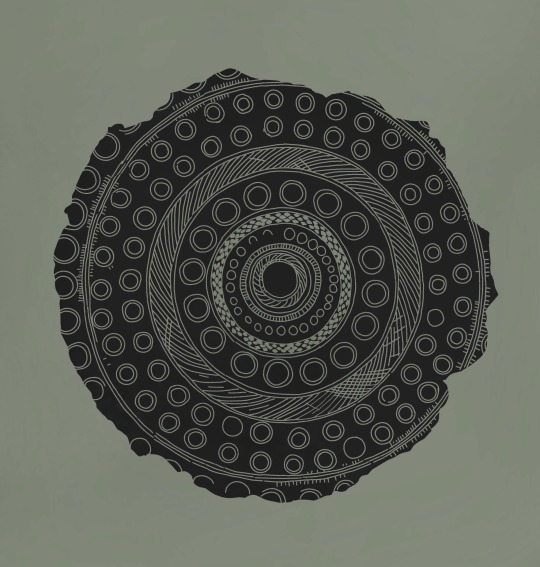
Design from belt plate: B2844.
Older Bronze age, found in Klepp, Rogaland, Norway.
#bronze age#norse#illustration#archeology#norwegian history#ancient civilizations#tutulus#belt#belt plate#disc brooch#disc plate#bronze#grave find#grave goods#egtved girl#sun cult#metal work#nordic bronze age#archaeology#grimmborg#flat
6 notes
·
View notes
Text

apparently it is wednesday my dudes
had to take spend a few days in limbo this week because i came down with a case of the HorrorsTM, but it gave me an opportunity to work on Deadweight a little bit more! i ended up writing almost 2,000 words that i didn't even end up using and i'm still a little bit cross with myself over it, but i got a solid chunk drafted oTL
(thank you @artsyunderstudy for the tag)
Baz tilts his head and drifts down to kiss me, but I pull back with a sluggish grunt. His brows knit together in the middle in that guilty, fretful way, so I quickly shake my head.
“My breath’s minging, you don’t have to do that,” I explain, and he rolls his eyes.
“So?”
“So kissing me will be minging.”
“You’ve snogged me with half-chewed food in your mouth, I’ve grown desensitized to all of your detritus.” He leans in again.
I grimace and lean away, pressing my fingers over the seam of his lips. “It’ll be gross!”
That was definitely a trap; he gives up the ghost and quickly redirects his attention to my palm, reaching up to tangle his fingers with mine and pin my hand against his wandering lips.
“I’ve.” Kiss. “Built.” Kiss. “An immunity.” Kiss.
He’s so fucking good. And I’m so greasy. Baz watches me dryly over my knuckles, pressing a chaste kiss to the middle one like he’s charming a debutante. (I always thought that was the sort of thing he did before I knew he was gay; charm debutantes and laze around with posh girls at expensive old-family parties, draped over all the furniture like a french model. Or a really well-dressed panther.)
“I’ll still kiss you when you’re gross, Simon,” he promises, “And when you’re ill. And when you feel like you don’t deserve it.”
AND A BONUS CROPPED SNIPPET OF THE AGORA PIC BECAUSE IT'S THE FIRST THING I'VE DRAWN IN ALMOST A MONTH:
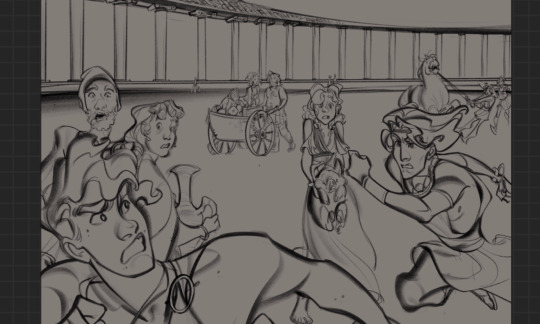
(@stitchyqueer and @shrekgogurt YOU'RE IT)
#wip wednesday#i will be honest. every time i say shit like 'baz is so rich even his exomis is dyed with murex'#i'm 100% saying it in the mean girls 'SHE HAS TWO FENDI PURSES AND A SILVER LEXUS' voice#i know disney's hercules has those little stylized disc brooches but i cannot in good conscience draw a chiton without peronai#for the same reason i cannot draw simon in armor AND shoes if he's supposed to be thebian like hercules/heracles#baz gets snazzy little tasseled kothornos to make up for it. hashtag richbitch.#also our dear friend basilton's necklace comes with Lore
24 notes
·
View notes
Photo
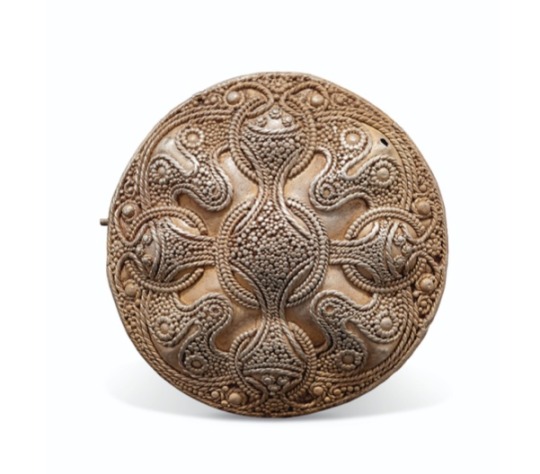
A VIKING SILVER DISC BROOCH
CIRCA 1100 A.D.
1 ¾ in. (4.4 cm.) diameter.
Both Viking men and women wore fine brooches made of gold, silver, and bronze to fasten cloaks and dresses. While maintaining a functional use, these brooches also signified status. Patterns of stylized animals are a common motif, formed of filigree and granulation. The present example is a particularly fine example of the type.
#A VIKING SILVER DISC BROOCH 1100 A.D.#jewelry#viking jewelry#ancient artifacts#history#history news#ancient history#ancient culture#ancient civilizations#viking history#viking culture
48 notes
·
View notes
Text
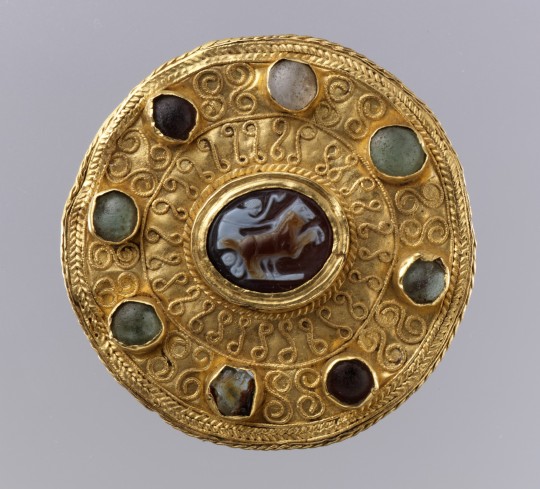
Gold disc brooch with cameo. The cameo is Roman and dates to 100-300 AD. The brooch is Lombardic and dates to the 6th century.
from The Metropolitan Museum of Art
439 notes
·
View notes
Text
The Wiuwert treasure
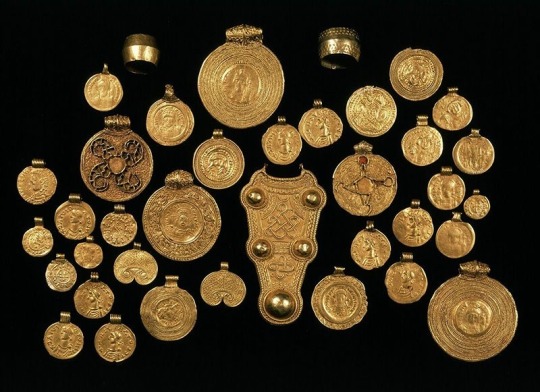
The Wiuwert/Wieuwerd treasure or hoard was found in a terp in modern Frisia.
The hoard was found in a little ceramic jar and contained the footplate of a bow brooch, two disc brooches with cloisonné, two “kidney brooches”, two finger rings, three bracteates and pendants.
These pendants were coins turned into jewelry. Their origin came from all over; Constantinopel, Ravenna, Viviers, Arles, Marseille, Sevilla and Maastricht. They are dated from the 6th and 7th century. It is assumed that the other jewelry was made from melted coins. The find itself is dated around 630.
No human remains are associated with the hoard. Most likely they belonged either to a gold smith or a local leader.
Rijksmuseum van Oudheden, Leiden - The Netherlands
Found in Wieuwerd, Frisia - The Netherlands
#frankish#merovingian#viking archaeology#archaeology#carolingian#charlemagne#field archaeology#viking mythology#merovingian archaeology#germanic mythology#norse mythology#anglo saxon#field archaeologist#frisian#viking#vikings#germanic#germanic folklore#germanic archaeology#odin#wodan#anglo saxon archaeology#history#jewelry#norse
284 notes
·
View notes
Text
Oldest reference to Norse god Odin found in Danish treasure
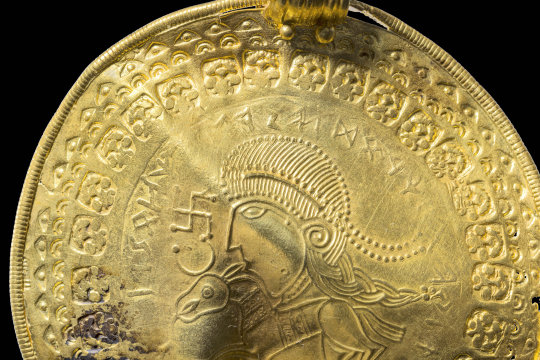
Scandinavian scientists said Wednesday that they have identified the oldest-known inscription referencing the Norse god Odin on part of a gold disc unearthed in western Denmark in 2020.
Lisbeth Imer, a runologist with the National Museum in Copenhagen, said the inscription represented the first solid evidence of Odin being worshipped as early as the 5th century—at least 150 years earlier than the previous oldest known reference, which was on a brooch found in southern Germany and dated to the second half of the 6th century.
The disc discovered in Denmark was part of a trove containing about a kilogram (2.2 pounds) of gold, including large medallions the size of saucers and Roman coins made into jewelry. It was unearthed in the village of Vindelev, central Jutland, and dubbed the Vindelev Hoard. Read more.
875 notes
·
View notes
Text
This mermaid came to shore for some good food and quality time with friends!!
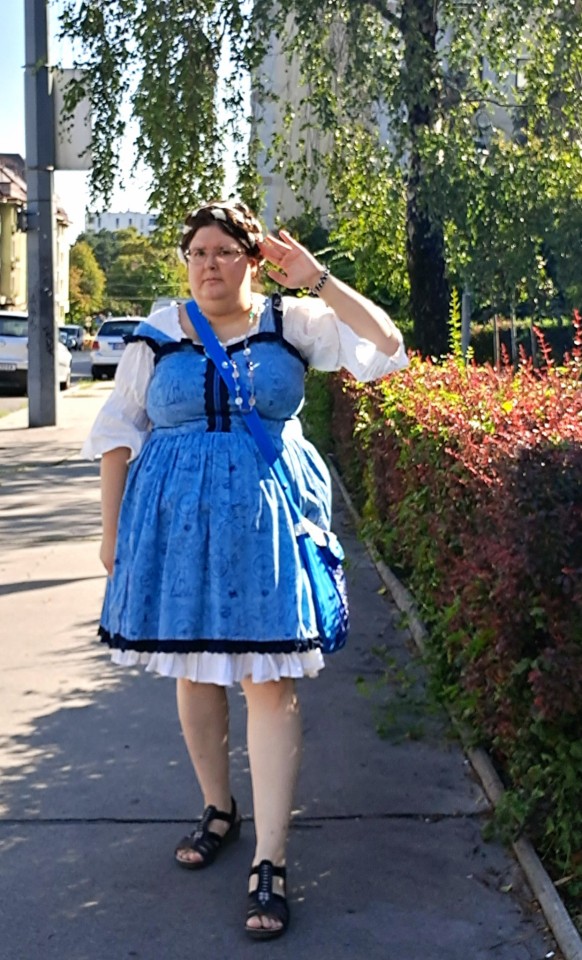

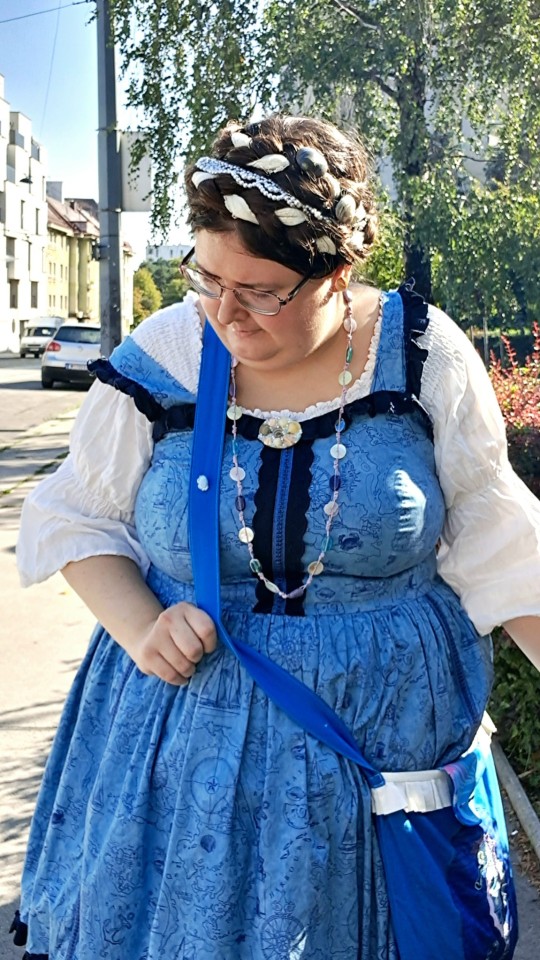

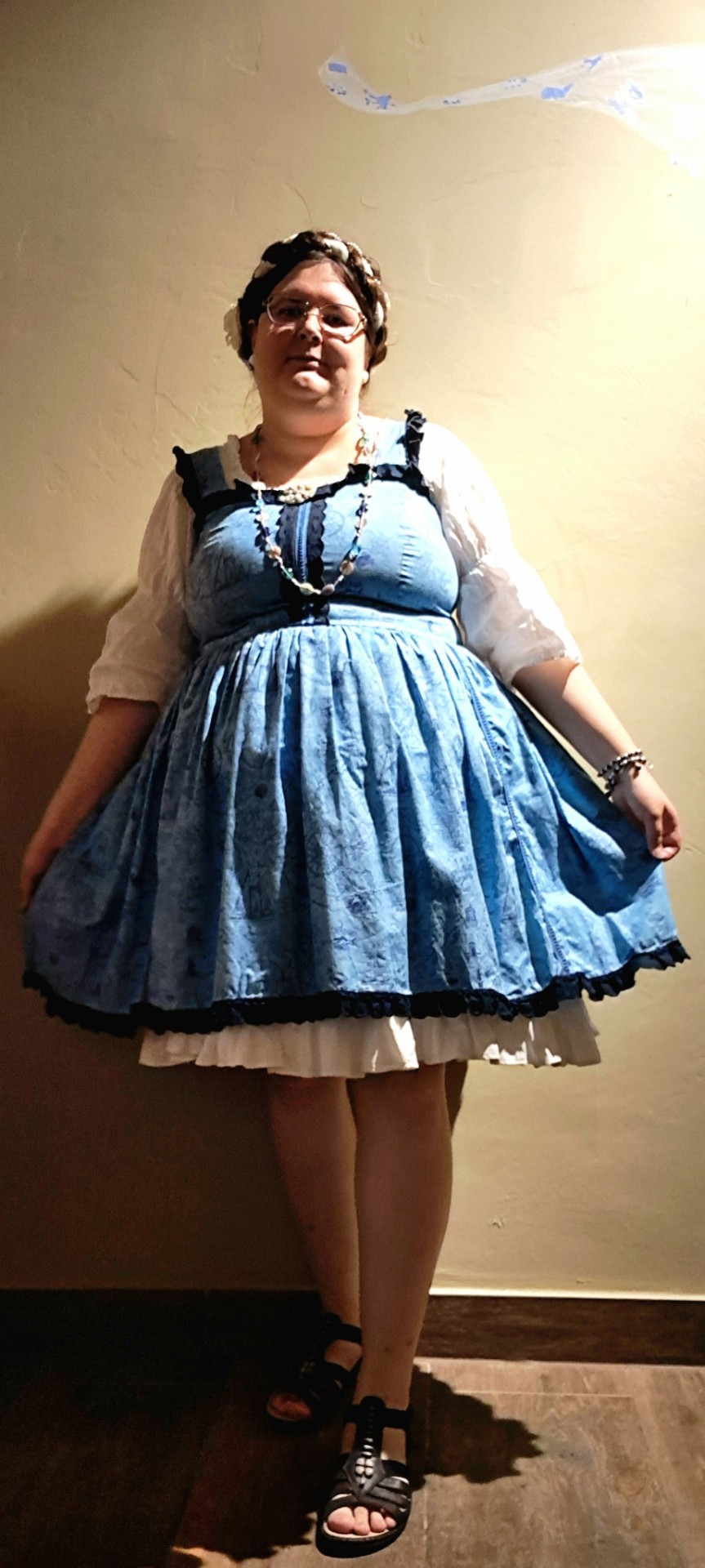

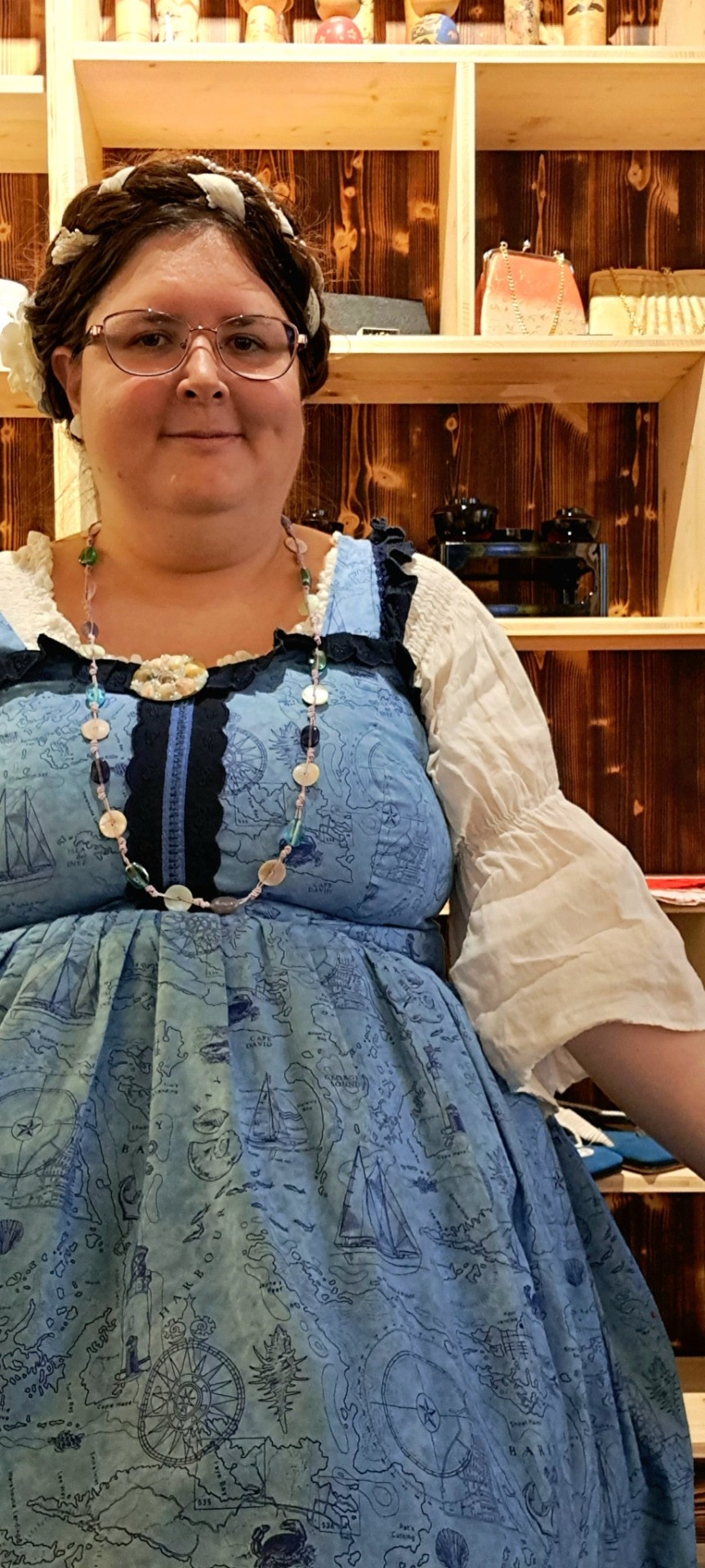


This lolita fashion meetup took place during our latest heatwave, at the beginning when it had about 32°C. Still way too hot, but my linen blouse at least was very breathable! I've thrifted the blouse in spring and fixed the sleeves to be less tight - don't want to be strangulated on my elbows! I decided to go with the mermaid theme I've already envisioned last summer with this dress, but didn't have the opportunity to style yet. I think the big flowy sleeves of the linen blouse and the hair style I made are very mermaidy! I used a lace scarf, a pearl necklace, flower hair clips and shell hairclips and made a double milkmaid braid / hair crown up do. I also have a handmade shell-and-pearls brooch and a long necklace with mother of pearl discs and turquoise and light purple glass beads.
The bag is handmade, but not by me. I got it through a craft swap (my only contribution is the flap to keep it closed - which I haven't made button holes for yet, so I have to safety pin it shut with a big ass safety pin!)
[id]Picture 1 is a full body picture of Amy. Amy is a young fat white woman with glasses and long brown hair. In the pictures she's wearing her hair in a double milkmaid braid, with the hair braided around a white lacey scarf. White pearls and seashells, as well as white flowers complete the mermaid hairdo. Her blue dress features a map and is giving ocean and pirate vibes. The flowey white blouse is meant to symbolise the white spray of the waves. The hem of a flowy white underskirt is also peeking out underneath the dress. It's symbolising sea foam as well! She's wearing a brooch with little seashells on it and a long necklace with mother-of-pearl discs and glass beads on it, to give more mermaid vibes. The bag fits the theme as well (of course!). Even her black sandals have white fishes on them!
Picure 2- 6 are various more close-up pictures of OP. She wanted to show of her elaborate hairdo and the various accessories she's wearing.
Picture 7: OP is standing in front of a wooden shelf filled with Japanese knickknacks. They are for sale at the restaurant. She's smiling softly at the viewer.
Picture 8: A big round plate with a straight edge (pointing to the table's edge). The plate is black and decorated with a red rim. There is an oblong serving dish placed on top, with some gyoza and spring rolls on some white baking paper, as well as some sweet potato hash browns.
Picture 9: A big round wooden serving plate with a red rim. On top is a pretty blue-and-white patterned bowl with a red rim, with various vegetable tempura in it. Next to it is a little bowl with scalloped edges and soy sauce pimped with spring onions in it (to dip the tempura into). There's also a red napkin with black chopsticks on the plate.[/id]
#diy#sewing#handmade fashion#handmade#plussize fashion#plussize j fashion#eglcommunity#handmade lolita fashion#in couldn't decide which pictures to include so i included all
95 notes
·
View notes
Text
COPENHAGEN, Denmark (March 8th 2023) — Scandinavian scientists said Wednesday that they have identified the oldest-known inscription referencing the Norse god Odin on part of a gold disc unearthed in western Denmark in 2020.
Lisbeth Imer, a runologist with the National Museum in Copenhagen, said the inscription represented the first solid evidence of Odin being worshipped as early as the 5th century, or at least 150 years earlier than the previous oldest known reference — on a brooch found in southern Germany and dated to the second half of the 6th century.
The disc discovered in Denmark was part of a trove containing about a kilogram (2.2 pounds) of gold, including large medallions the size of saucers and Roman coins made into jewelry. It was unearthed in the village of Vindelev, central Jutland, and dubbed the Vindelev Hoard.
Experts think the cache was buried 1,500 years ago, either to hide it from enemies or as a tribute to appease the gods. A golden bracteate, a kind of thin, ornamental pendant, which carried an inscription that read, “He is Odin’s man,” likely referring to an unknown king or overlord.
“It’s one of the best executed runic inscriptions that I have ever seen,” Imer said. Runes are symbols that early tribes in northern Europe used to communicate in writing.
Odin was one of the main gods in Norse mythology and was frequently associated with war as well as poetry.
More than 1,000 bracteates have been found in northern Europe, according to the National Museum in Copenhagen, where the trove discovered in 2020 is on display.
Krister Vasshus, an ancient language specialist, said that because runic inscriptions are rare, “every runic inscription (is) vital to how we understand the past.”
“When an inscription of this length appears, that in itself is amazing,” Vasshus said. “It gives us some quite interesting information about religion in the past, which also tells us something about society in the past.”
During the Viking Age, considered to be from 793 to 1066, Norsemen known as Vikings undertook large-scale raiding, colonizing, conquest and trading throughout Europe. They also reached North America.
The Norsemen worshipped many gods and each of them had various characteristics, weaknesses and attributes. Based on sagas and some rune stones, details have emerged that the gods possessed many human traits and could behave like humans.
“That kind of mythology can take us further and have us reinvestigate all the other 200 bracteate inscriptions that we know,” Imer said.
#asatru#new lore just dropped!#archaeology#odin#norse mythology#this is one of those rare things i've known about for months but due to NDAs!!!
248 notes
·
View notes
Text
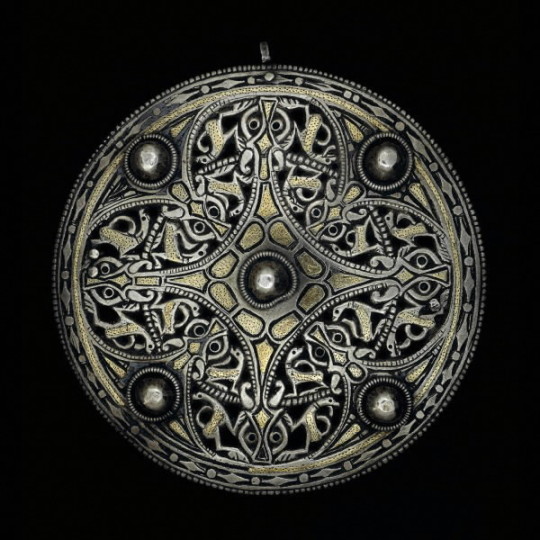
The Strickland Brooch, an Anglo-Saxon silver disc brooch with gold and niello inlay, decorated with intricate Trewhiddle-style animal pattern, c. mid-9th century AD.
28 notes
·
View notes
Text
"For decades archaeologists have puzzled over whether the stone-lined burial chamber, which was discovered in 1999 on Bryher, contained the remains of a man or a woman.
Excavations revealed a sword in a copper alloy scabbard and a shield alongside the remains of the sole individual, objects commonly associated with men. But a brooch and a bronze mirror, adorned with what appears to be a sun disc motif and usually associated with women, were also found. The grave is unique in iron age western Europe for containing both mirror and sword.
Now a scientific study led by Historic England has determined the remains are that of a woman, a discovery that could shed light on the role of female warriors during a period in which violence between communities is thought to have been a fact of life."
(...)
“Although we can never know completely about the symbolism of objects found in graves, the combination of a sword and a mirror suggests this woman had high status within her community and may have played a commanding role in local warfare, organising or leading raids on rival groups.”
Stark added: “This could suggest that female involvement in raiding and other types of violence was more common in iron age society than we’ve previously thought, and it could have laid the foundations from which leaders like Boudicca would later emerge.”"
49 notes
·
View notes
Text
Scandinavian scientists said Wednesday that they have identified the oldest-known inscription referencing the Norse god Odin on part of a gold disc unearthed in western Denmark in 2020.
Lisbeth Imer, a runologist with the National Museum in Copenhagen, said the inscription represented the first solid evidence of Odin being worshipped as early as the 5th century—at least 150 years earlier than the previous oldest known reference, which was on a brooch found in southern Germany and dated to the second half of the 6th century.
The disc discovered in Denmark was part of a trove containing about a kilogram (2.2 pounds) of gold, including large medallions the size of saucers and Roman coins made into jewelry. It was unearthed in the village of Vindelev, central Jutland, and dubbed the Vindelev Hoard.
Experts think the cache was buried 1,500 years ago, either to hide it from enemies or as a tribute to appease the gods. A golden bracteate—a kind of thin, ornamental pendant—carried an inscription that read, "He is Odin's man," likely referring to an unknown king or overlord.
"It's one of the best executed runic inscriptions that I have ever seen," Imer said.
Of course they released the news on a Wednesday.
78 notes
·
View notes
Text
List of jewels given to the Queen at her visit to Qatar and surrounding areas in 1979
A pear‐shaped pearl set in a natural oyster
A mWtistring pearl choker
A watch
A long necklace of gold discs studded with precious stones.
A gold brooch in the shape of a sailing ship, studded with diamonds and rubies.
A necklace studded with sapphires surrounded by 300 diamonds, with matching earrings and ring.
A double string of pearls.
5 notes
·
View notes
Note
You oughta make yourself some of those chinese fandom snowglobe disc thingies with the stickers and glitter and stuff. That's a hobby.
One of those as a little brooch or keychain would be awesome…I’ll have to look up guides you’ve inspired me
#except my brother’s birthday is coming up and I didn’t work for a while so 😑#I might give him $20 and be done with it
3 notes
·
View notes
Text


Excavation Uncovers Very Rare 6th C. Iron Folding Chair
ARCHAEOLOGISTS HAVE UNCOVERED A “FOLDING CHAIR” FROM THE 7TH CENTURY AD DURING EXCAVATIONS IN THE VILLAGE OF ENDSEE, LOCATED IN MIDDLE FRANCONIA, GERMANY.
The chair was first discovered in 2022, deposited as a funerary offering in a burial from the early medieval period. The grave contained the remains of a woman aged 40-50-years-old, along with a necklace made of small multi-coloured glass beads, two brooches, an almandine disc brooch, a large millefiori bead, and a whorl.
In addition to the woman’s grave, the archaeologists also uncovered a man’s grave containing richly decorated weapons (lance, shield, spathe). According to the researchers, the graves are probably related to the Franconian influence of the Main and Tauber regions in the 6th and 7th centuries.

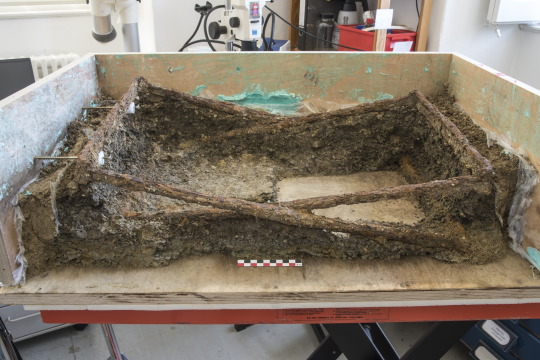

Now unveiled to the public at the “Archaeology in Bavaria” conference following a lengthy restoration process, the chair consists of two frames connected with an axle pin and is decorated with brass non-ferrous metal inlays. There are narrow slots on the horizontal struts, which were used to attach a seat likely made from animal fur (as indicated by mineralised organic remains).
Folding chairs deposited as grave goods are exceptionally rare. Within scholarly investigations they suggest that the deceased held a prominent position or occupied a higher social status. To date, there have been 29 instances of early medieval graves containing folding chairs discovered throughout Europe, with merely six of them being crafted from iron.
Prof. Mathias Pfeil, head of the Bavarian State Office for Monument Preservation, said: “The extremely rare discovery of an early medieval iron folding chair in 2022 was already a sensation, but the fact that such details have been preserved after remaining in the ground for over 1,400 years was a surprise.”
“This find, which at first glance seems so modern, is an absolute rarity and of the highest cultural and historical interest, because it provides insight into the grave furnishings of prominent sections of the population,” added Prof Pfeil.



#Excavation Uncovers Very Rare 6th C. Iron Folding Chair#village of endsee#middle franconia germany#ancient grave#ancient tomb#funerary offering#ancient artifacts#archeology#archeolgst#history#history news#ancient history#ancient culture#ancient civilizations#ancient art
44 notes
·
View notes
Text

Gold disc brooch decorated with garnets and calcium carbonate, Anglo Saxon England, 7th century AD
from The Ashmolean Museum
392 notes
·
View notes
Text

The Protégé
Chapter 6: I Need You To Trust Me
Luke and Sabé, as well as Luke and Leia, make a deal. Padmé has a mission for Pooja.
The skirt of the dress looked to be floor-length, with an exquisite red-purple colour to it. A shorter dress was layered over the top, a slightly bluer purple. The sleeves puffed at the wrists and the collar rose like a flower around the wearer's neck. Luke glanced into the box and drew out a scarf of the same colour, with several silver brooches to pin it in place.
Sabé stifled her cry, but not so quietly Luke didn't notice it. He glanced at where she was staring, her hand creeping towards her mouth, to see a silver headpiece still lying in the box. He lifted it up.
"It was one of my favourite dresses when I was a senator," Amidala said. "I wore it at the Proclamation of a New Order, and at Emperor Palpatine's coronation."
The headpiece, something between a disc and a crescent moon, burned in Luke's hands.
"'So this is how liberty dies,'" Sabé quoted, raising her eyes at Amidala, "'with thunderous applause'?"
Read the rest on AO3 or on FFN!
#sabé#luke skywalker#padmé amidala#i have no memory of my mother#leia organa#space twins#pooja naberrie#darth vader#biggs darklighter#tonra#the protégé#my writing#random words on a page#that art was SO rushed please don't look too closely at it
28 notes
·
View notes